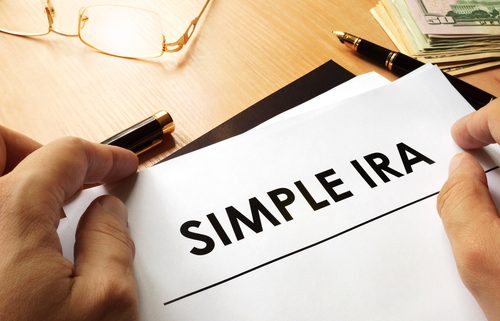The Advantages of Investing with a Self-Directed SIMPLE IRA
You might have heard of a SIMPLE IRA and been intrigued not only by its name, but by its possibilities. A Self-Directed SIMPLE IRA allows retirement investors to handle a small business retirement plan with the freedom to make a wide range of investments. But how does a SIMPLE IRA work, and might it be right for your specific situation?
What is a Self-Directed SIMPLE IRA?
A Self-Directed SIMPLE IRA stands for a “Savings Incentive Match Plan for Employees, Individual Retirement Account.” It’s designed for people who have small businesses, such as those with 100 or fewer employees. This retirement savings plan can allow you to make contributions to employees as well as matching contributions up to 3%.
These accounts are easy to establish, easy to handle, and can make it possible for someone with a small business to offer retirement benefits to entice people to work at that company. But it also helps to know the specific advantages of using a Self-Directed SIMPLE IRA:
What are the Advantages of Using a Self-Directed SIMPLE IRA?
As the name suggests, an arrangement of this type should be simple. But that’s not the only advantage of using an account like this:
- Ease of establishment. Sometimes, establishing an IRA like this for a small business can feel like headache after headache. Not so with the Self-Directed SIMPLE IRA. It has minimal requirements for paperwork, requiring such establishment as the “initial plan document” and making your annual disclosures to your employees. You will then establish the plan working through a financial institution.
- Tax deductions for contributions. When you make contributions toward employee accounts, employers will get a tax deduction. This helps you offer retirement benefits to employees while reducing your potential tax burden—though of course, this does require that you offer the retirement plan and make such contributions. The deductions help you afford the retirement plan, but they do not mean that it pays for itself.
- Good contribution maximums. Employees would be able to contribute a maximum of $12,500 during 2018, for example. That’s more than they can contribute to a Roth IRA in 2019. This means that it can be a great way for employees to save for retirement without having to completely fund the retirement account themselves.
Are There Drawbacks to Using a SIMPLE IRA?
With the advantages listed here, it’s only honest if we also discuss the possible disadvantages of a Self-Directed SIMPLE IRA. What will ultimately help you make your choice is how well these advantages and disadvantages line up with your individual priorities.
One of the key disadvantages of a SIMPLE IRA is that while these IRA types can help you make more contributions than you would with, say, a Roth IRA, the contribution limits still are not as high as they would be with a 401(k) plan. Even a Self-Directed Solo 401(k) plan can have extremely high limits for retirement, which allows you to stow away a lot of money in a short amount of time, taking advantage of a larger income.
If you have to compete with other companies offering 401(k) benefits, a Self-Directed SIMPLE IRA might be a positive step forward, but it’s not always going to match those high contribution limits.
However, if you have nothing at all, a SIMPLE IRA can be a great way to help your employees put something away for retirement.
As with anything, a Self-Directed SIMPLE IRA is a tool—and it helps to know the advantages and disadvantages of working with this tool before you get started. Interested in learning more about Self-Directed IRAs? Contact American IRA, LLC at 866-7500-IRA (472) for a free consultation. Download our free guides or visit us online at www.AmericanIRA.com.








